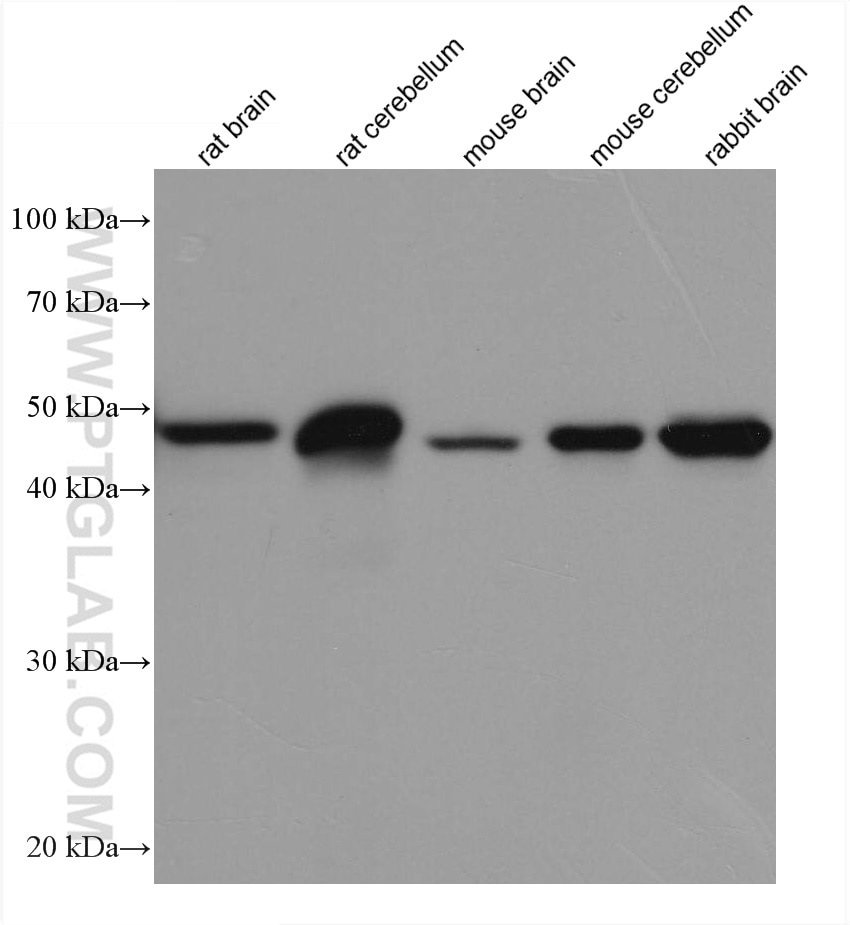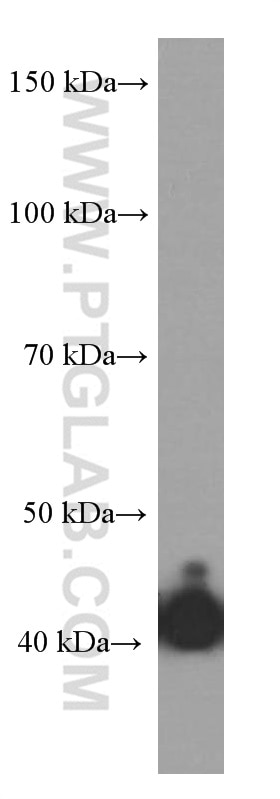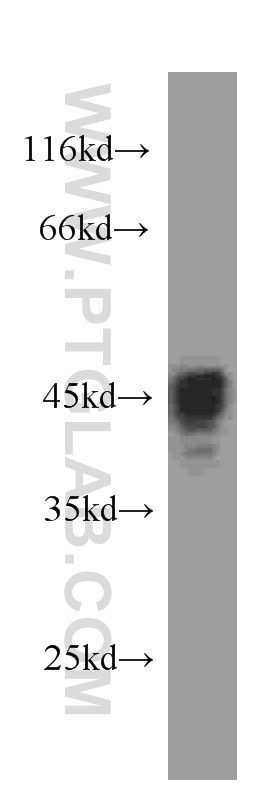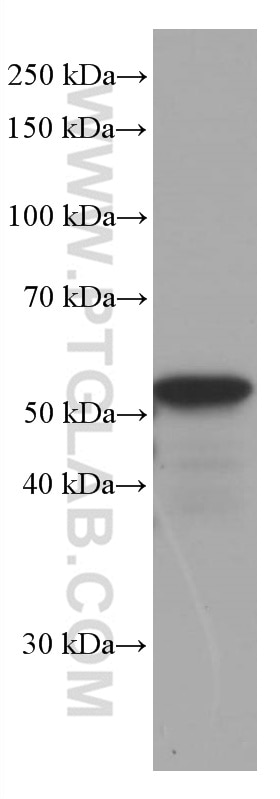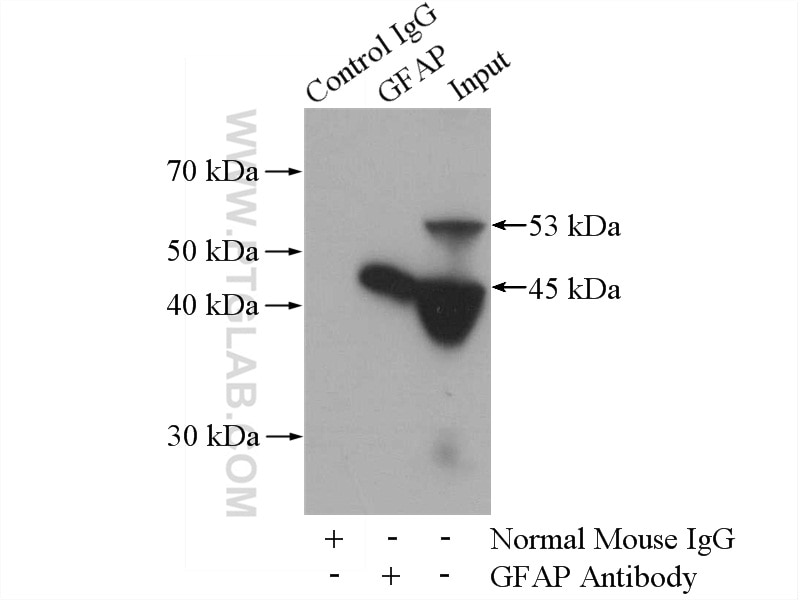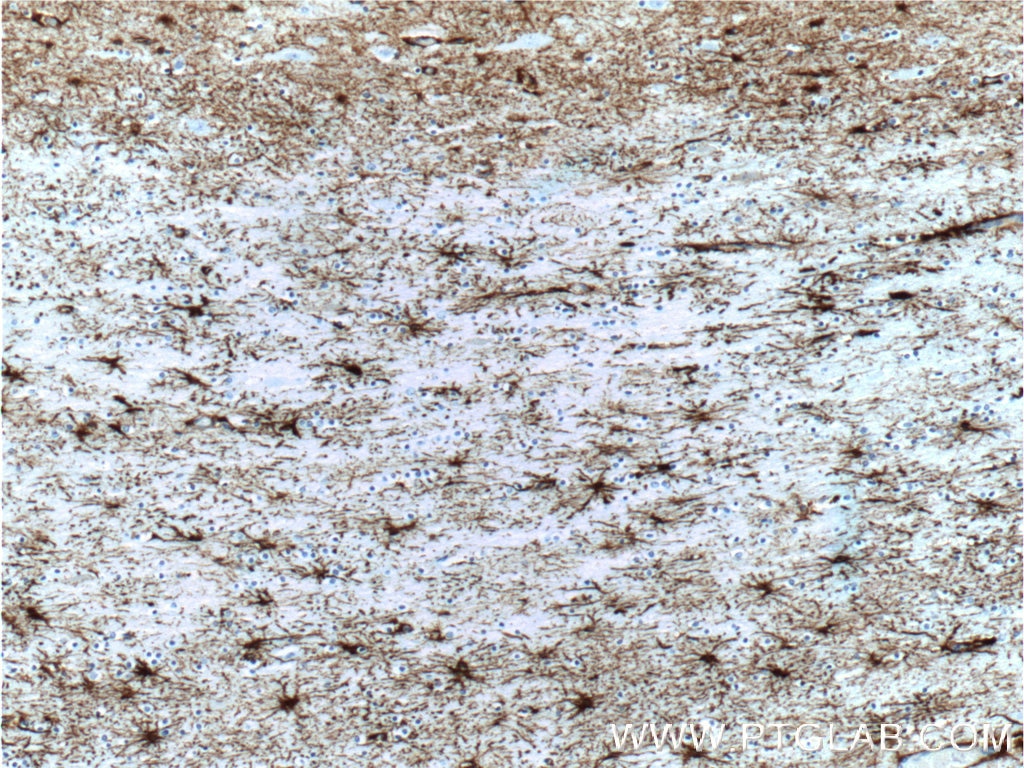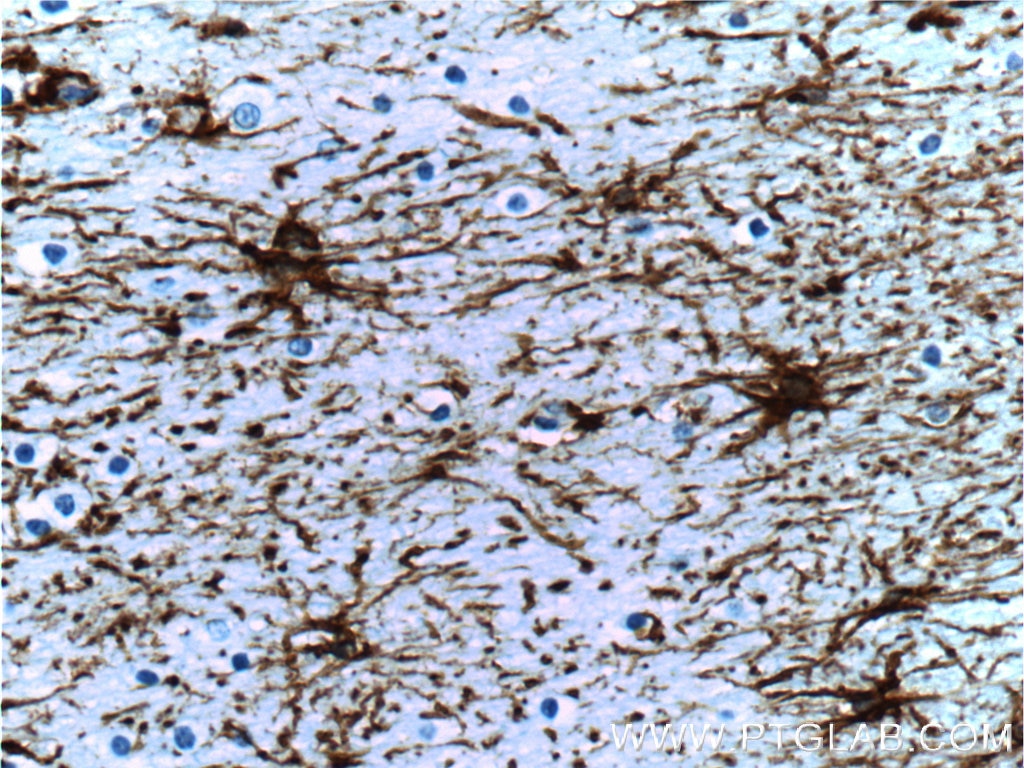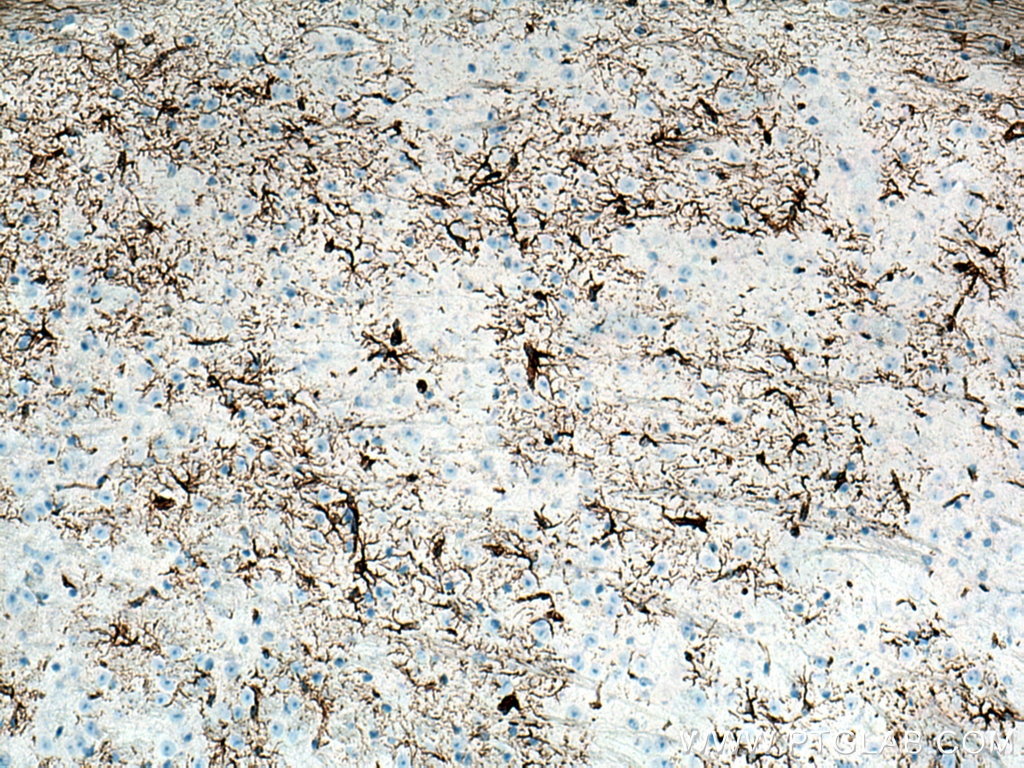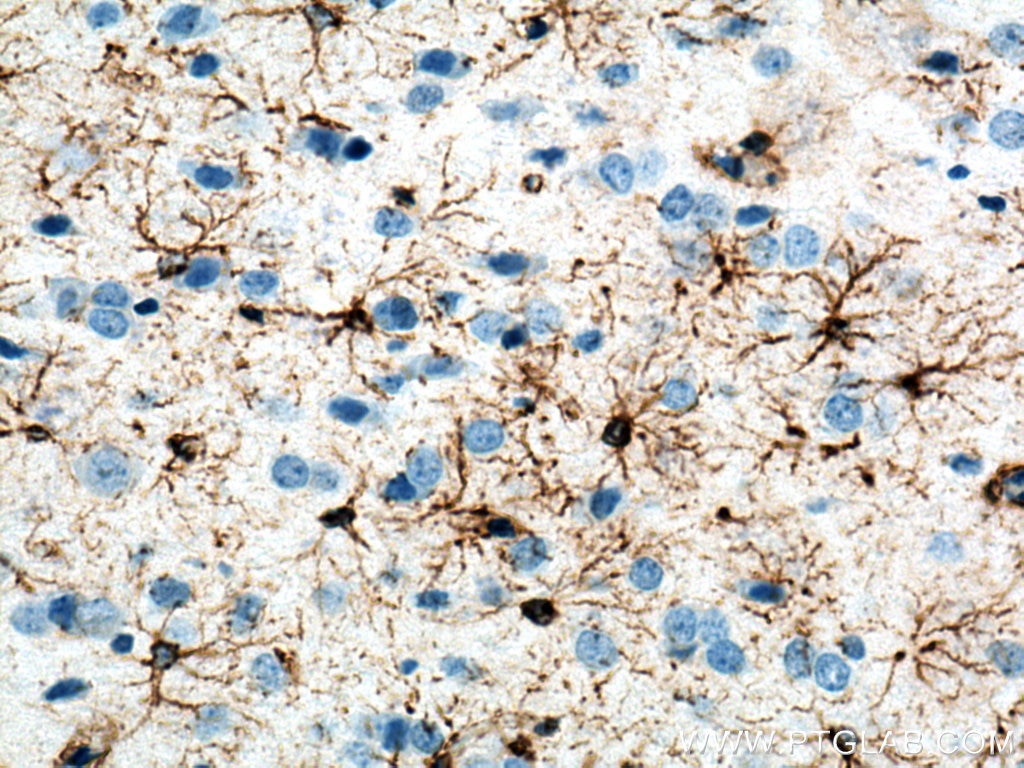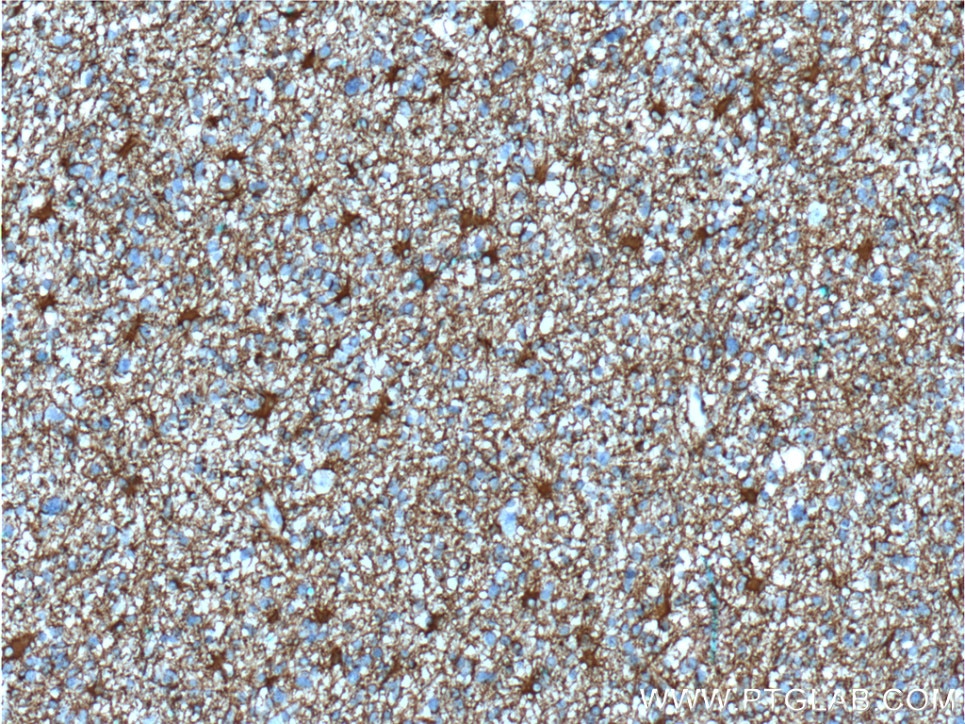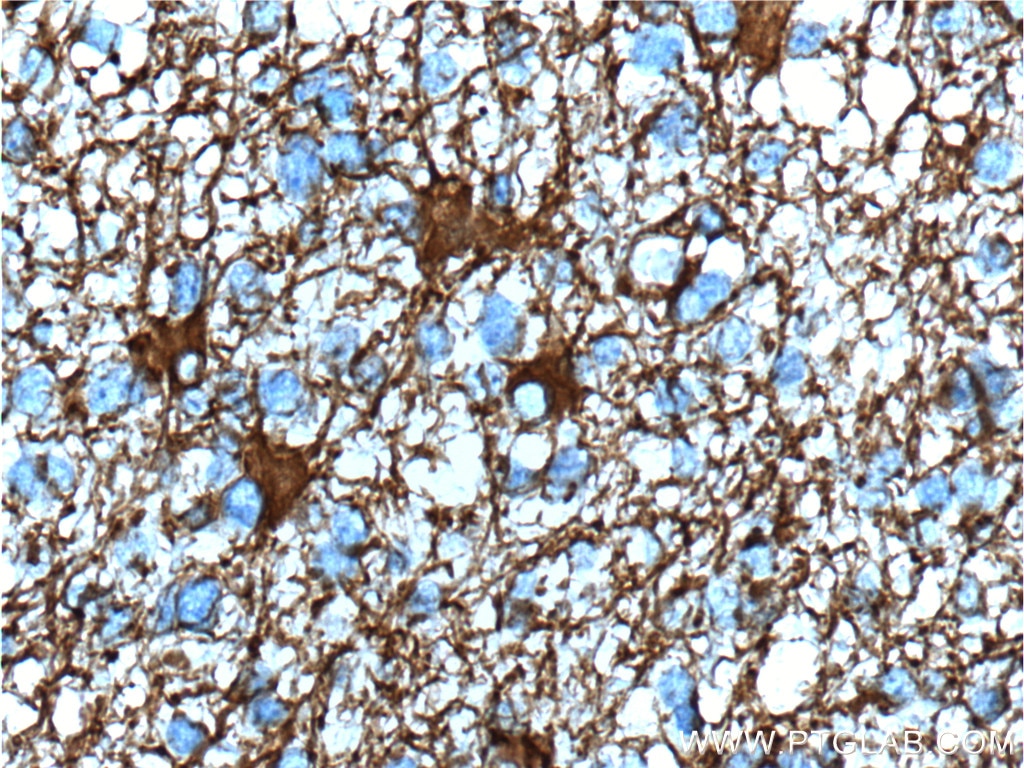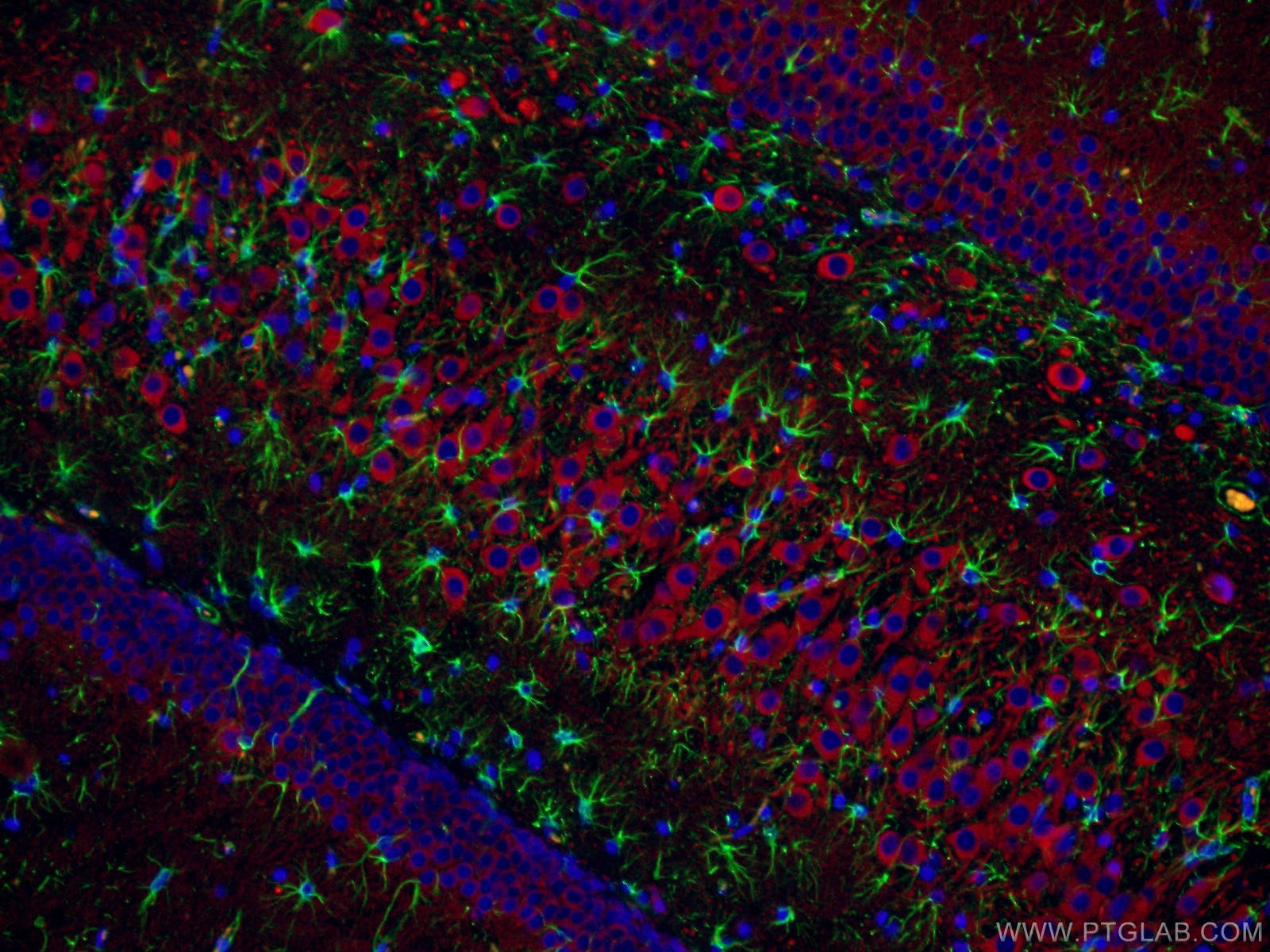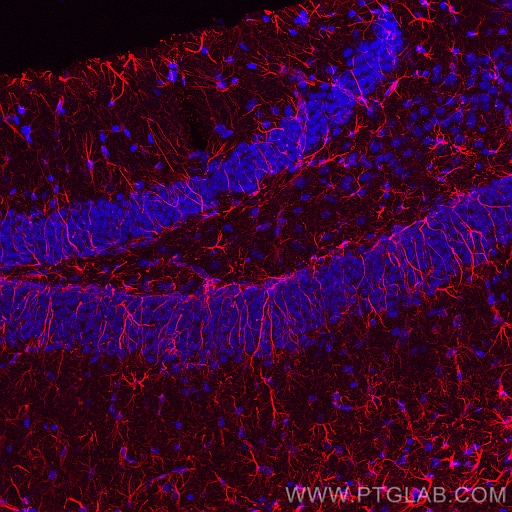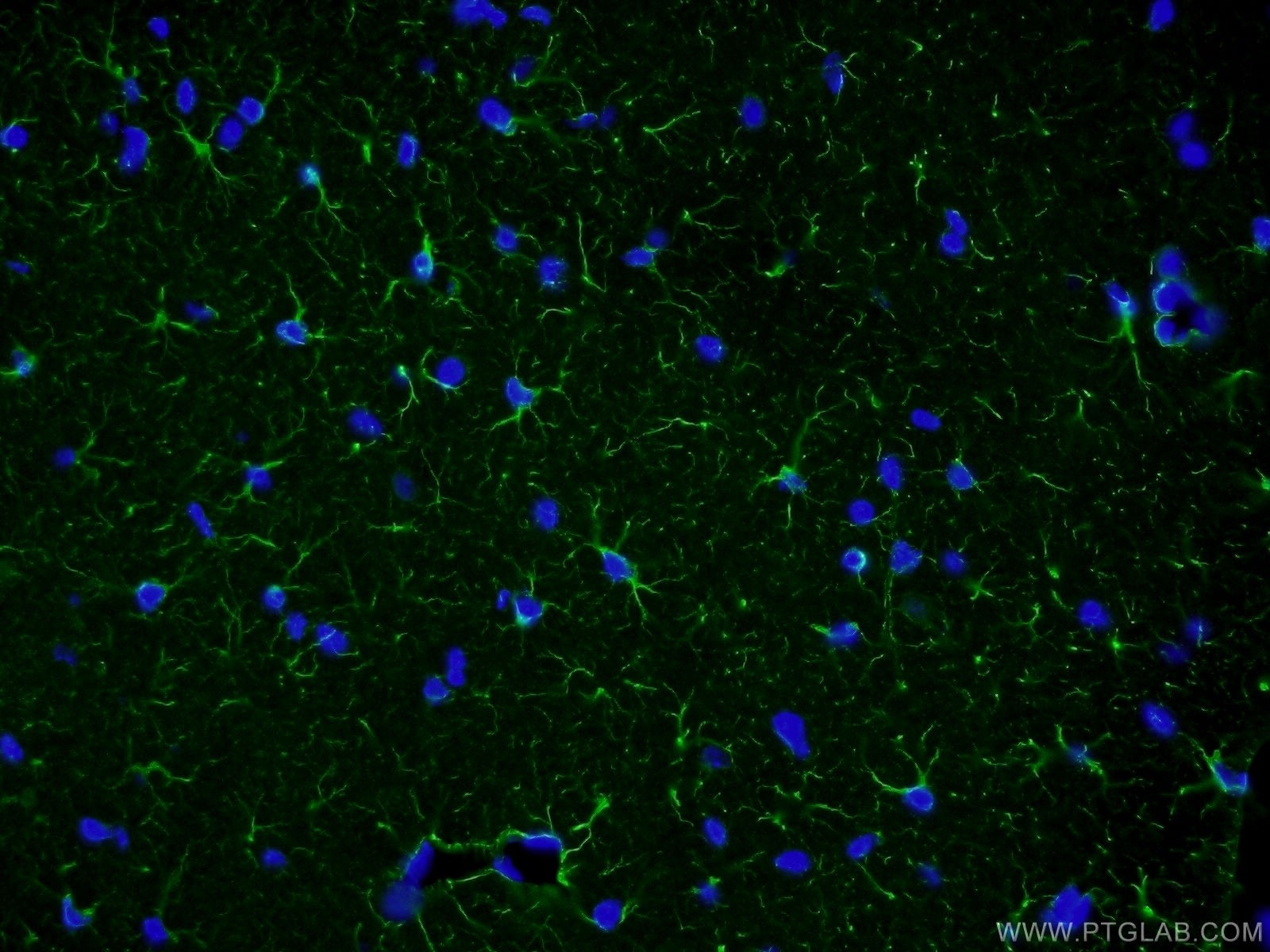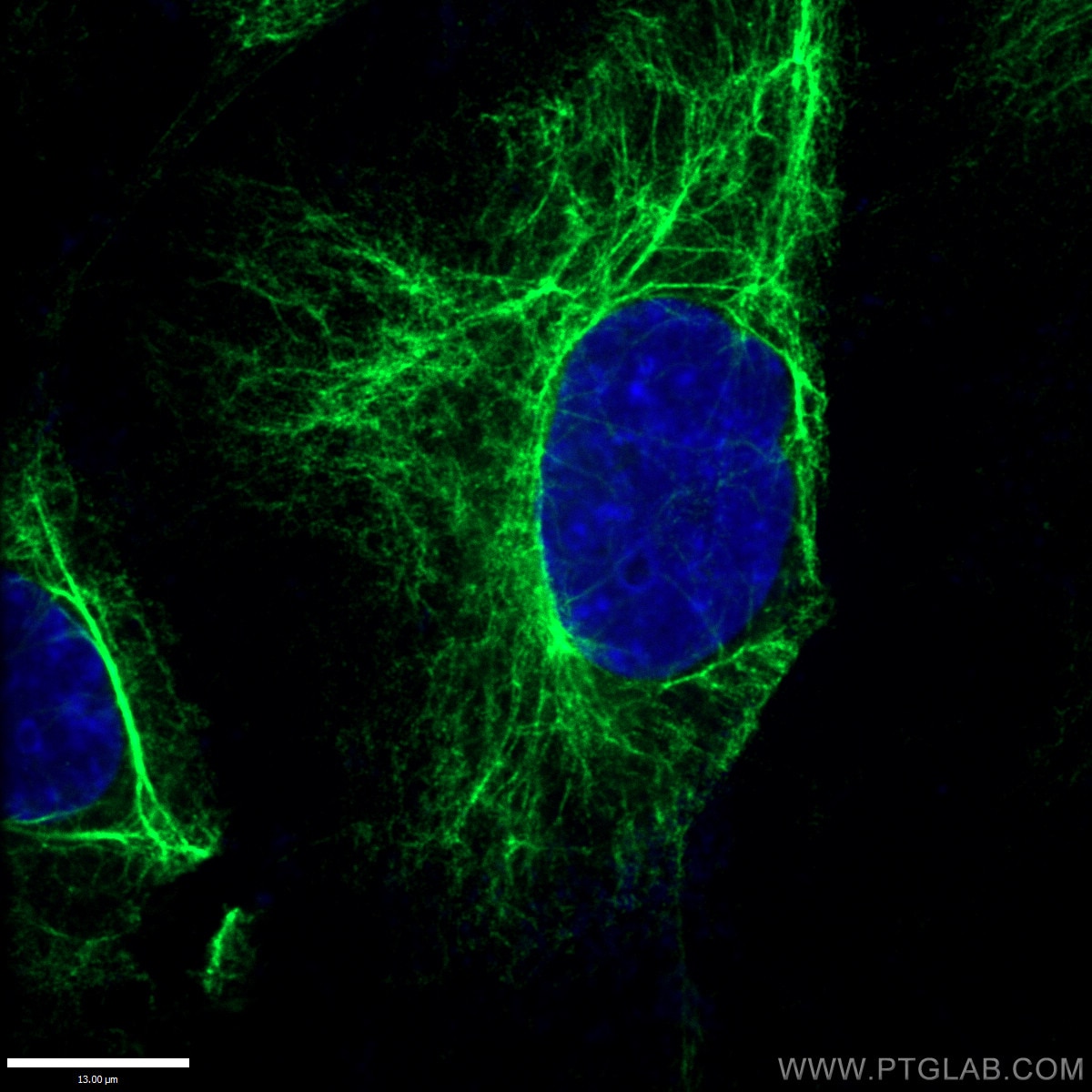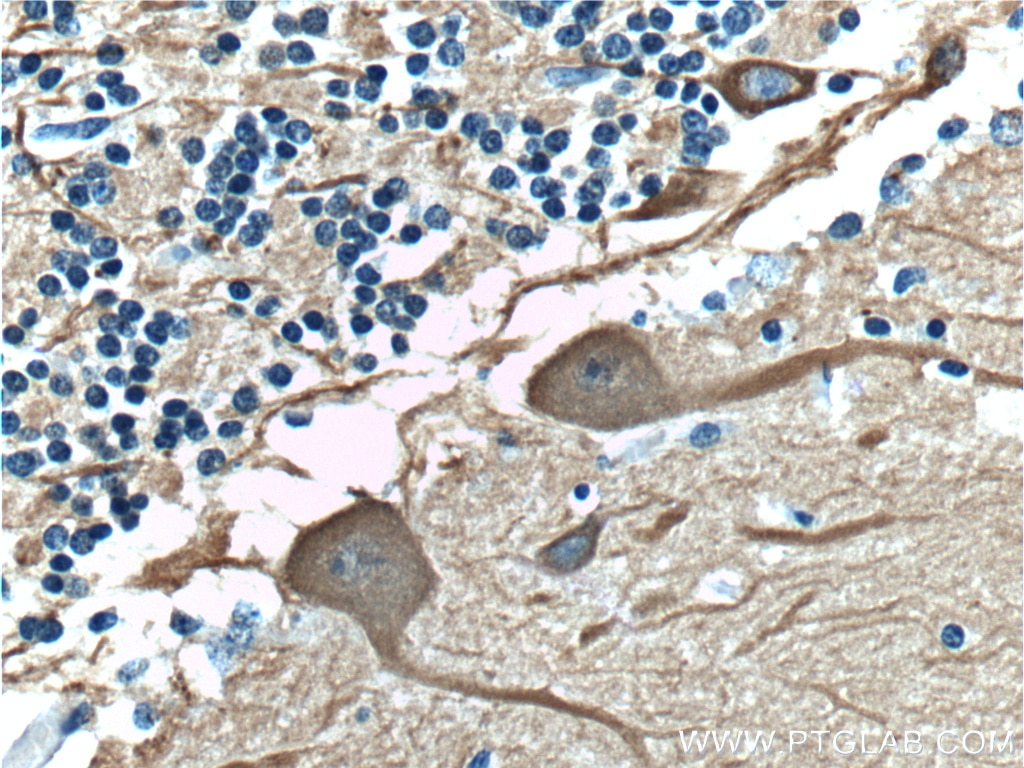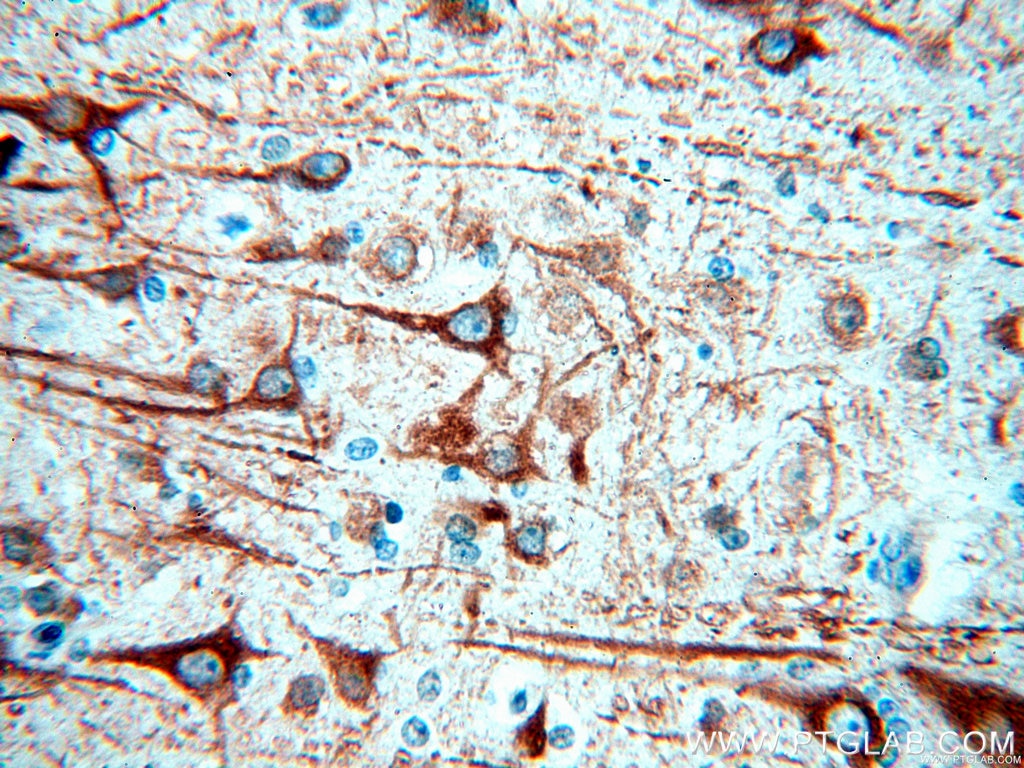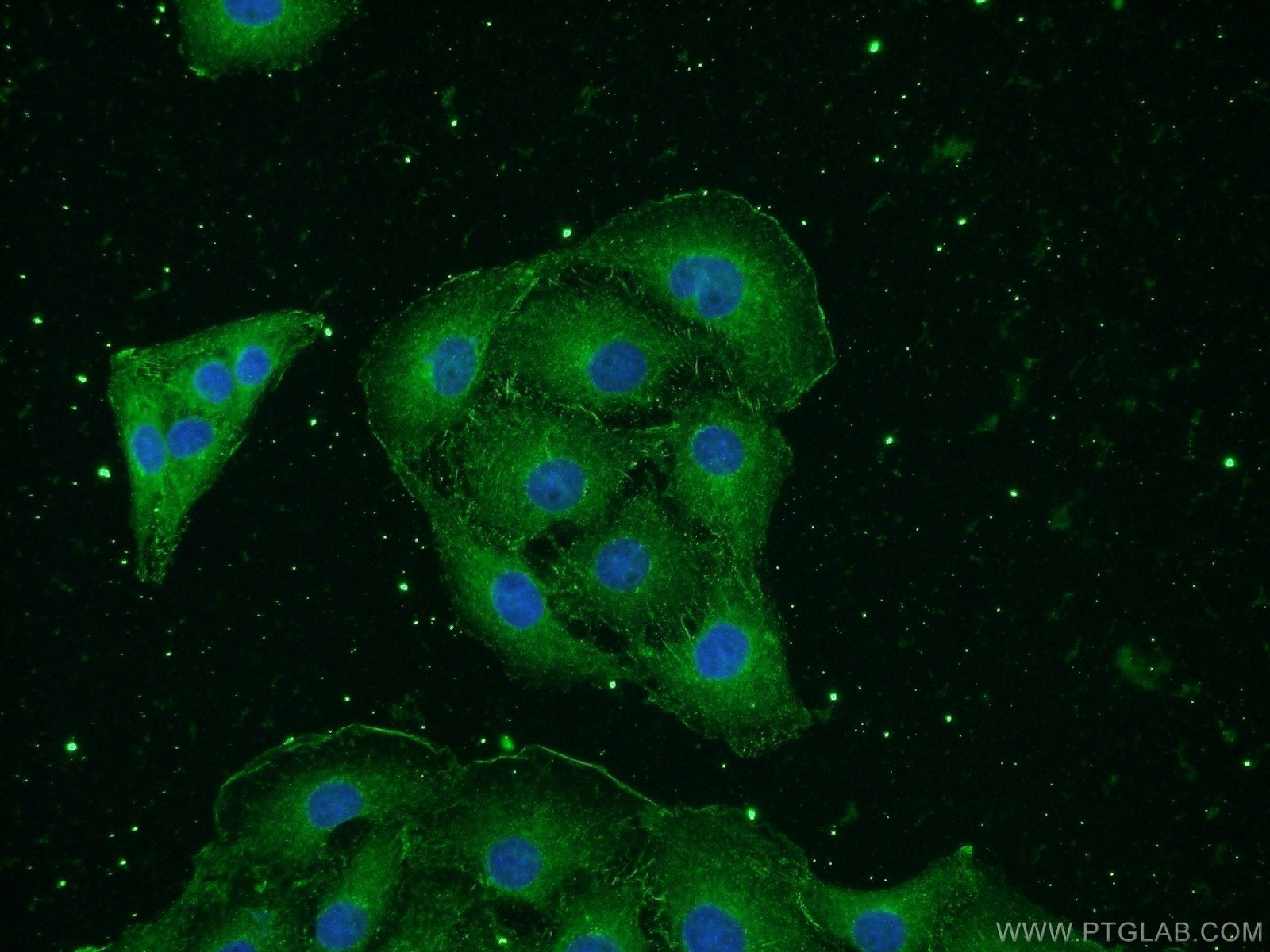Anticorps Monoclonal anti-GFAP
GFAP Monoclonal Antibody for IF, IHC, IP, WB, ELISA
Hôte / Isotype
Mouse / IgG2a
Réactivité testée
Humain, Lapin, porc, rat, souris
Applications
WB, IP, IHC, IF, Dot blot, ELISA
Conjugaison
Non conjugué
124
CloneNo.
4B2E10
N° de cat : 60190-1-Ig
Synonymes
Galerie de données de validation
Applications testées
| Résultats positifs en WB | tissu cérébral de rat, cellules U-251, cerveau de lapin, cerveau de souris, cervelet de rat, cervelet de souris, tissu cérébral de porc, tissu cérébral humain |
| Résultats positifs en IP | tissu cérébral de souris |
| Résultats positifs en IHC | tissu cérébral humain, tissu cérébral de rat, tissu cérébral de souris, tissu de gliome humain il est suggéré de démasquer l'antigène avec un tampon de TE buffer pH 9.0; (*) À défaut, 'le démasquage de l'antigène peut être 'effectué avec un tampon citrate pH 6,0. |
| Résultats positifs en IF | tissu cérébral de rat, tissu cérébral de souris |
Dilution recommandée
| Application | Dilution |
|---|---|
| Western Blot (WB) | WB : 1:5000-1:50000 |
| Immunoprécipitation (IP) | IP : 0.5-4.0 ug for 1.0-3.0 mg of total protein lysate |
| Immunohistochimie (IHC) | IHC : 1:500-1:10000 |
| Immunofluorescence (IF) | IF : 1:50-1:500 |
| It is recommended that this reagent should be titrated in each testing system to obtain optimal results. | |
| Sample-dependent, check data in validation data gallery | |
This antibody is not recommended for immunocytofluorescent assays. It is not suitable for frozen sections.
Applications publiées
| WB | See 42 publications below |
| IHC | See 12 publications below |
| IF | See 86 publications below |
Informations sur le produit
60190-1-Ig cible GFAP dans les applications de WB, IP, IHC, IF, Dot blot, ELISA et montre une réactivité avec des échantillons Humain, Lapin, porc, rat, souris
| Réactivité | Humain, Lapin, porc, rat, souris |
| Réactivité citée | rat, Humain, Lapin, porc, souris |
| Hôte / Isotype | Mouse / IgG2a |
| Clonalité | Monoclonal |
| Type | Anticorps |
| Immunogène | GFAP Protéine recombinante Ag10452 |
| Nom complet | glial fibrillary acidic protein |
| Masse moléculaire calculée | 432 aa, 50 kDa |
| Poids moléculaire observé | 45-52 kDa |
| Numéro d’acquisition GenBank | BC013596 |
| Symbole du gène | GFAP |
| Identification du gène (NCBI) | 2670 |
| Conjugaison | Non conjugué |
| Forme | Liquide |
| Méthode de purification | Purification par protéine A |
| Tampon de stockage | PBS avec azoture de sodium à 0,02 % et glycérol à 50 % pH 7,3 |
| Conditions de stockage | Stocker à -20°C. Stable pendant un an après l'expédition. L'aliquotage n'est pas nécessaire pour le stockage à -20oC Les 20ul contiennent 0,1% de BSA. |
Informations générales
Function
GFAP (Glial fibrillary acidic protein) is a type III intermediate filament (IF) protein specific to the central nervous system (CNS). GFAP is one of the main components of the intermediate filament network in astrocytes and has been proposed as playing a role in cell migration, cell motility, maintaining mechanical strength, and in mitosis.Tissue specificity
GFAP is expressed in central nervous system cells, predominantly in astrocytes. GFAP is commonly used as an astrocyte marker. However, GFAP is also present in peripheral glia and in non-CNS cells, including fibroblasts, chondrocytes, lymphocytes, and liver stellate cells (PMID: 21219963).Involvement in disease
- Mutations in GFAP lead to Alexander disease (OMIM: 203450), an autosomal dominant CNS disorder. The mutations present in affected individuals are thought to be gain-of-function.
- Upregulation of GFAP is a hallmark of reactive astrocytes, in which GFAP is present in hypertrophic cellular processes. Reactive astrogliosis is present in many neurological disorders, such as stroke, various neurodegenerative diseases (including Alzheimer's and Parkinson's disease), and neurotrauma.
Isoforms
Astrocytes express 10 different isoforms of GFAP that differ in the rod and tail domains (PMID: 25726916), which means that they differ in molecular size. Isoform expression varies during the development and across different subtypes of astrocytes. Not all isoforms are upregulated in reactive astrocytes.Post-translational modifications
Intermediate filament proteins are regulated by phosphorylation. Six phosphorylation sites have been identified in GFAP protein, at least some of which are reported to control filament assembly (PMID: 21219963).Cellular localization
GFAP localizes to intermediate filaments and stains well in astrocyte cellular processes.
Protocole
| Product Specific Protocols | |
|---|---|
| WB protocol for GFAP antibody 60190-1-Ig | Download protocol |
| IHC protocol for GFAP antibody 60190-1-Ig | Download protocol |
| IF protocol for GFAP antibody 60190-1-Ig | Download protocol |
| IP protocol for GFAP antibody 60190-1-Ig | Download protocol |
| Standard Protocols | |
|---|---|
| Click here to view our Standard Protocols |
Publications
| Species | Application | Title |
|---|---|---|
Brain Behav Immun l-Cysteine suppresses hypoxia-ischemia injury in neonatal mice by reducing glial activation, promoting autophagic flux and mediating synaptic modification via H2S formation. | ||
J Extracell Vesicles Extracellular vesicle-mediated delivery of circDYM alleviates CUS-induced depressive-like behaviours. | ||
Neuron UBQLN2-HSP70 axis reduces poly-Gly-Ala aggregates and alleviates behavioral defects in the C9ORF72 animal model. | ||
Small A Multichannel Flexible Optoelectronic Fiber Device for Distributed Implantable Neurological Stimulation and Monitoring. | ||
EBioMedicine Inhibition of Nwd1 activity attenuates neuronal hyperexcitability and GluN2B phosphorylation in the hippocampus. |
Avis
The reviews below have been submitted by verified Proteintech customers who received an incentive forproviding their feedback.
FH B (Verified Customer) (01-05-2022) | Very clear and strong signal in WB with a right MW about 50 kD.
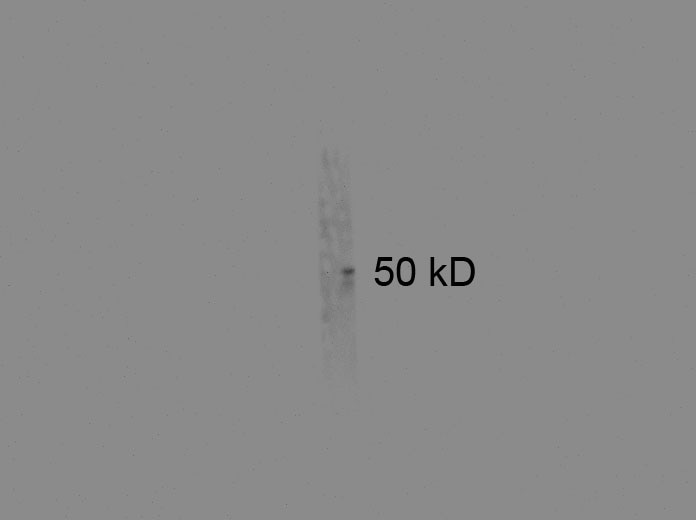 |
FH Mai (Verified Customer) (01-30-2020) | The antibody seemed to have some background. I will repeat the experiment with different dilutions and conditions to find an optimum dilution for this antibody.
|
FH George (Verified Customer) (08-27-2019) | This gave good staining for activated astrocytes in the 488 channel (1:500 secondary dilution) however there was also significant endogenous background staining which made analysis difficult.
|
FH Chintan (Verified Customer) (06-03-2019) | This antibody was used to detect Glial fibrillary acidic protein in primary mouse microglia cells using Western blot. Antibody worked quite well and gave a very specific band near 50 kDa.
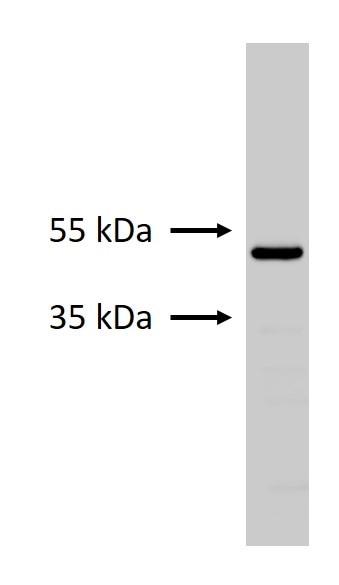 |
FH Di (Verified Customer) (12-18-2018) | Good antibody!
|
FH Lalitha (Verified Customer) (12-13-2018) | Reliable results.
|
FH Chandrakanth (Verified Customer) (12-06-2018) |
|
FH Emily (Verified Customer) (11-29-2018) |
|
